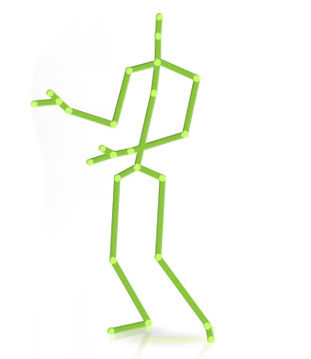| Kinect SDK 2 And An Xbox Adaptor |
| Written by Harry Fairhead | |||
| Friday, 24 October 2014 | |||
|
The Kinect is a well developed depth camera, but the SKD for version 2 is only just rolling out. You can now also use the Xbox One Kinect with the PC and create Windows Store apps. Is this the start of the new Kinect era?
The SDK 2.0 isn't a surprise because Microsoft has been running a preview program since late last year, However, it is nice that it is finally considered finished. You can download it for free and use it without any licensing fees even for full commercial applications. The big downside of SDK 2 is that it can only be used with Windows 8. Given that Windows 8 hasn't been a huge success, and Windows 10 is already in prospect, this is a problem for many. Even so, compared to the early SDKs the new 2.0 has so many advantages, you simply have to put up with Windows 8. There are now features in the SDK that previously would have been ranked as higher level, rather than just the building blocks, for even more advanced apps.
There is support for native apps and .NET but the big problem with using .NET is that it lacks any Microsoft-provided 3D graphics. You could argue that if you want to work with 3D then you need the speed that C++ offers and you need to directly interface with DirectX. This isn't entirely true, however, and .NET provides an easy way to prototype ideas - as long as you can manage to find a way to do enough 3D. The native API has been updated so that it is easier to use but .NET is still easier. The good news is that if you want to work with the Kinect at a higher level then its Unity support lets you get straight to the 3D models. Perhaps this is now the best way to get started with easy Kinect development. Also worth exploring are the Face API, hand pointer gestures, Fusion to build 3D models, and Visual Gesture builder. Of course, there is also the all-new Kinect Studio, which makes interactive work so much easier. Although in the early days of the Kinect there were many amazing demos, commercial apps don't seem to have forced the revolution on us. It looked promising when Microsoft decided to make sure that there was a Kinect 2 with every Xbox One. Unfortunately this didn't happen because the extra $100 made it uncompetitive with the PlayStation. So now most users buy an Xbox without a Kinect.
Also just announced is a new adapter that allows you to use the Xbox Kinect with the PC. This is slightly strange in that at $49.99 this makes the PC and Xbox+adapter prices the same. In the days of the Kinect 1 there was a price advantage in buying an Xbox Kinect 1 and using an adapter, but for the Kinect 2 the only advantage is that you can use it with an Xbox and a PC. If the Xbox had shipped with a Kinect as standard this would have made more sense. However, if you do have an Xbox Kinect then this is a cheaper route to using it with your PC. The third Kinect announcement is that now you can develop and submit Kinect apps to the Windows Store. Three free apps are currently available:
Again the problem is that these apps only run on Windows 8 machines and this doesn't constitute a big market. What happens next all depends on the success of Windows 10. After an amazing start, Microsoft's Kinect hasn't been the living room revolution we all thought it might be. This is due partly to dropping it from the Xbox One and partly to the emphasis switching from managed to native code and then to Window Store apps. You could say that the Kinect is yet another a victim of Windows 8 and the anti managed code faction.
More InformationMicrosoft releases Kinect SDK 2.0 and new adapter kit Related ArticlesRomoCart Brings A Race Track To Your Living Room AquaTop Display - A True Immersive Interface Kinect plus a glass wedge gives ...
To be informed about new articles on I Programmer, install the I Programmer Toolbar, subscribe to the RSS feed, follow us on, Twitter, Facebook, Google+ or Linkedin, or sign up for our weekly newsletter.
Comments
or email your comment to: comments@i-programmer.info |
|||
| Last Updated ( Friday, 24 October 2014 ) |




